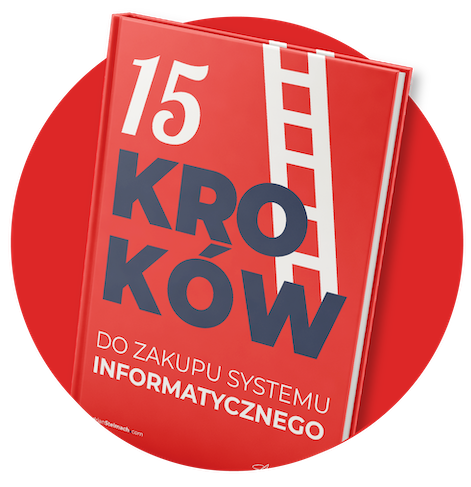
NEWSLETTER
Wpisz swój adres e-mail i zyskaj e-booka
Bez niechcianej poczty ani reklam
Tylko merytoryczne treści z obszaru digitalizacji produkcji

Agriculture 4.0. When I first heard the term, it sounded a bit like science fiction. Autonomous tractors, barns full of sensors, artificial intelligence deciding when to water crops. And yet – it’s happening here and now.
For me, it’s a bit like going from watching a black-and-white TV to staring at a wall of HD screens – suddenly you see more, more accurately and in real time. And that’s what Agriculture 4.0 is about – entering a world where the farm begins to resemble a smart factory.

Agriculture 4.0 is nothing more than the adaptation of technologies familiar from Industry 4.0 – IoT, artificial intelligence, automation or data analytics – to crops and farming. The farm is becoming a digital space where every acre of field and every cow in the barn can be monitored like a production line.
Imagine a field where drones and satellites collect soil and moisture information, and sensors collect data on the condition of the soil and send it to the cloud. The farmer is guided by data instead of intuition – he knows when to irrigate, when to fertilize, and when it’s better to wait, because the rain will come in two days.
Let’s start with the cowshed. Or rather, e-cowsheds. There are already more than 500 milking robots in operation in Poland. The farm in Cieszyn is installing 25 such machines, which will be a record number of such devices within a single dairy farm.
But this is just the beginning. A Polish innovation, the e-stado system is a kind of smartwatch for cows.
The solution uses biosensors placed on cows and sensors in the barn. The data goes to the cloud, and the farmer gets notifications about heat, births or stressed animals. Instead of guessing – the farmer sees the exact state of the herd in the app.
Well, if a factory can have an MES system, a barn can have its “management system.”

When we talk about autonomous vehicles, most people think of cabs in San Francisco. Is there a chance for a revolution in agriculture big enough for agricultural vehicles to be the ones associated with modern automotive solutions?
Yes. I will say more: John Deere or Case IH already have fully autonomous tractors, equipped with 360° cameras, GPS RTK and control from an app. They can work at night, in the rain, without operator fatigue. Yield or fuel consumption data goes straight to the cloud.
Do such solutions have a raison d’être in Poland? Unfortunately, in our country the problem is not technology, but regulations. An autonomous tractor can’t drive on a public road, so in order for it to reach the field, it has to be… delivered by truck. It’s like buying a car that can only be driven on a parking lot.
Another issue is lack of knowledge. Farmers have too little awareness of new technologies. The aspect of education and implementation of pilot projects is still neglected in Poland.

Join the newsletter and gain access to 40% of the book
“15 Steps to Buying an IT System“.
Imagine a field is a huge heat map that perfectly illustrates which sections are over-dried and which have excess moisture. Thanks to GPS, drones and sensors, the farmer can fertilize or spray only those areas that really need it. The result? Up to 25% lower fertilizer costs.
Agriculture 4.0 is thus growing crops with surgical precision. This approach not only saves money, but also reduces the negative impact on the environment.
I often hear the question, “This is cool stuff, but probably only for large farms?”. The answer is: not necessarily.
Yes, autonomous harvesters mainly pay off for large-scale farms. However, let’s look at IoT sensors. They’re cheap, accessible and work even with poorer internet coverage. They allow you to track soil moisture or temperature and plan seasonal work.
This can be the first step – instead of investing hundreds of thousands of zlotys, just a few hundred is enough to see what happens to the field in real time.
History shows that the structure of employment changes over time. A century ago, most Poles worked in agriculture; today, two-thirds of citizens are employed in services.
Automation is a natural process. Also in farms.
Does this mean that full robotization awaits us? Perhaps. There are predictions that humanoid robots could cost less than 100 thousand zlotys within a decade. That’s less than the annual salary of a worker. When such a robot can pick tomatoes, haul hay and guard the barn at the same time – it will change the face of the farm.

If I had to name one technology that will change agriculture the most in the next five years, I would say without hesitation: artificial intelligence.
Why? Because AI makes it possible to better predict weather, respond to changes in crops, and even select more resistant crop varieties. This is not science fiction – it’s already happening. AI is becoming the “brain of the farm,” learning season after season and advising what to do to make yields higher and costs lower. AI will tell you when to irrigate, what to spray with, how to respond to insect pressure, while at the same time biotechnology is developing – new crop varieties, more resistant and more efficient.
Agriculture 4.0 is not a futuristic vision, but a new era that is already entering Polish farms, an era we are already entering now. E-cultivation systems, precision fertilization solutions, autonomous tractors – all these solutions lead in one direction: greater efficiency, lower costs and better care for crops and animals.
Agriculture 4.0 means less repetitive tasks and more supervision, analysis and decision-making.
Can a cow wear a smartwatch? Can a tractor drive itself back to the garage? This is not a joke, these are authentic questions that we try to answer in the latest episode of the Digitalize.co.uk podcast. Join us to find out what Agriculture 4.0 is all about.
